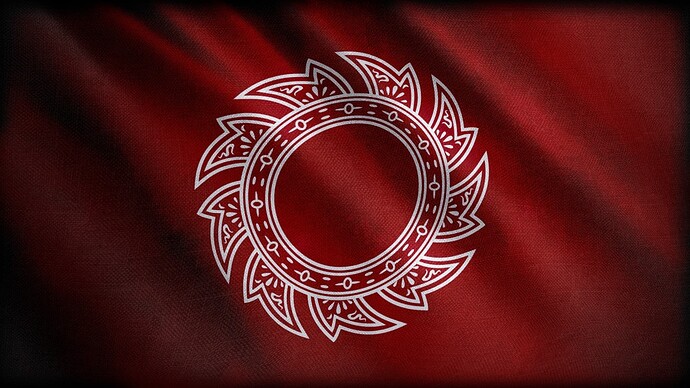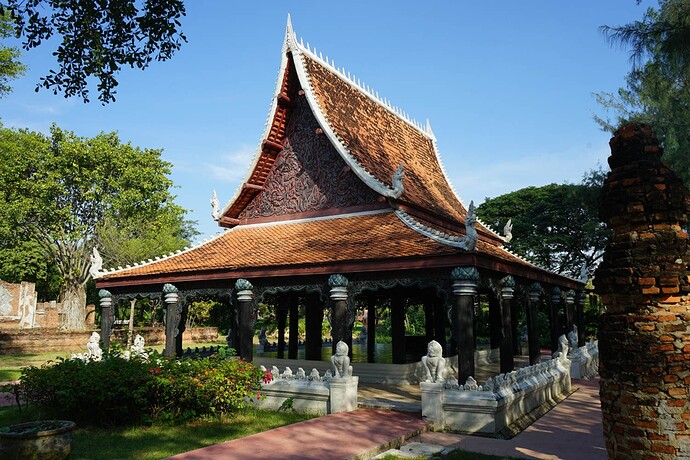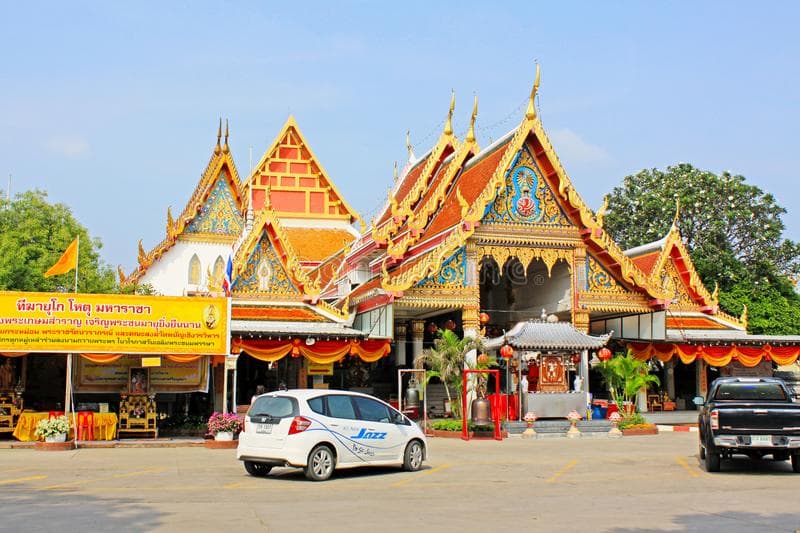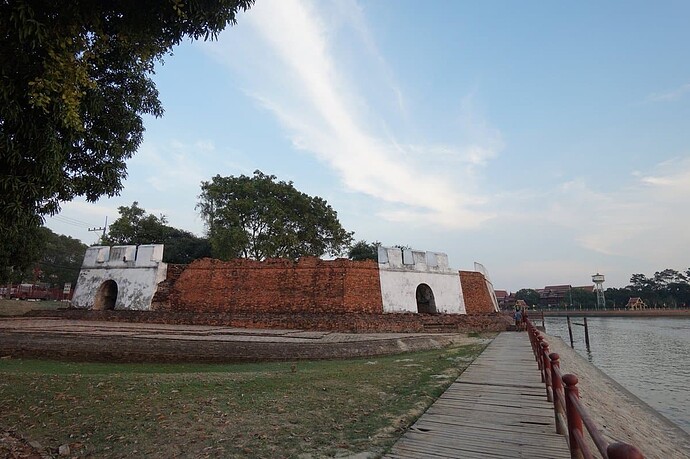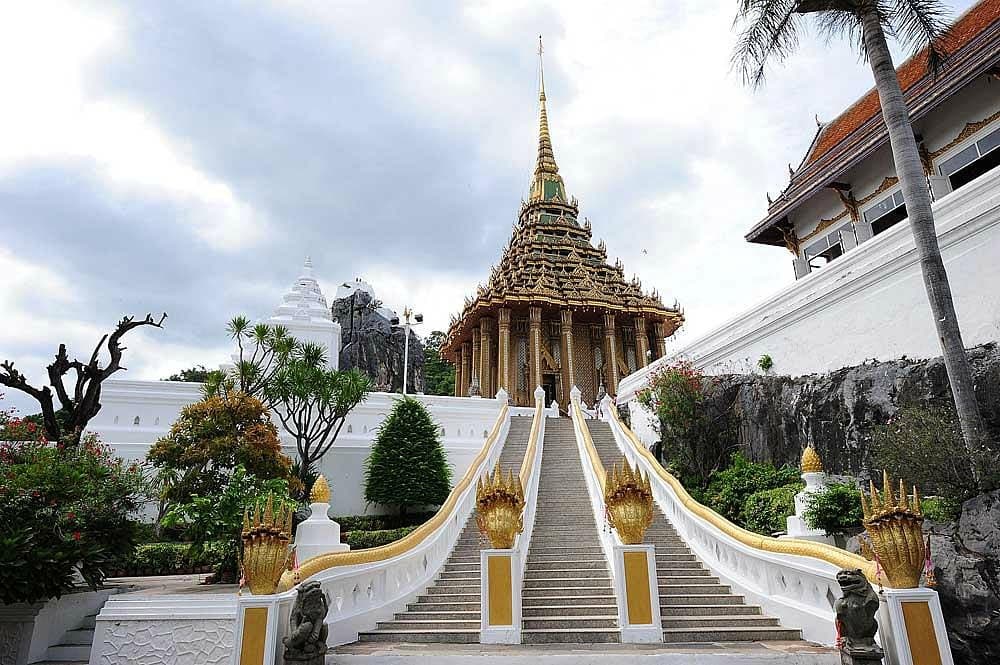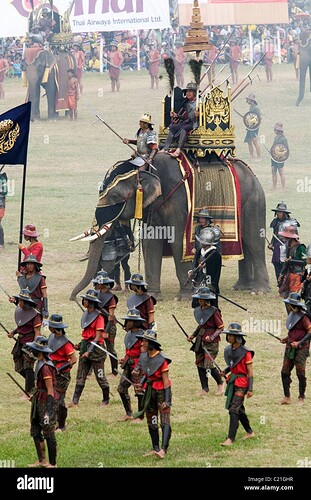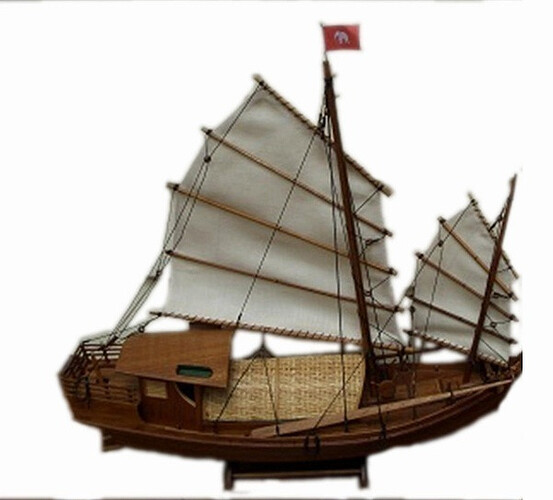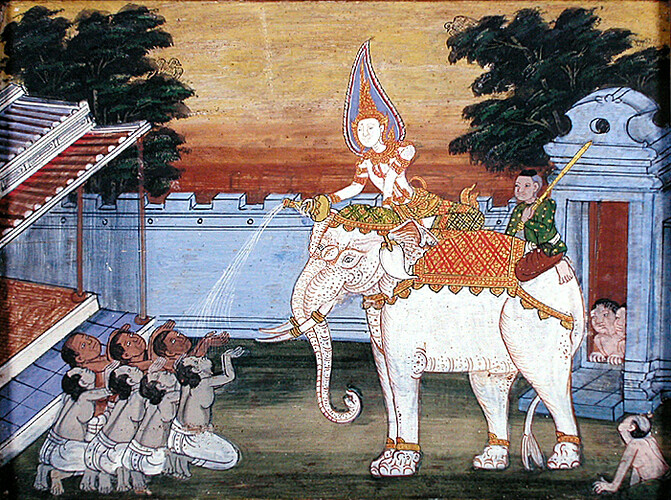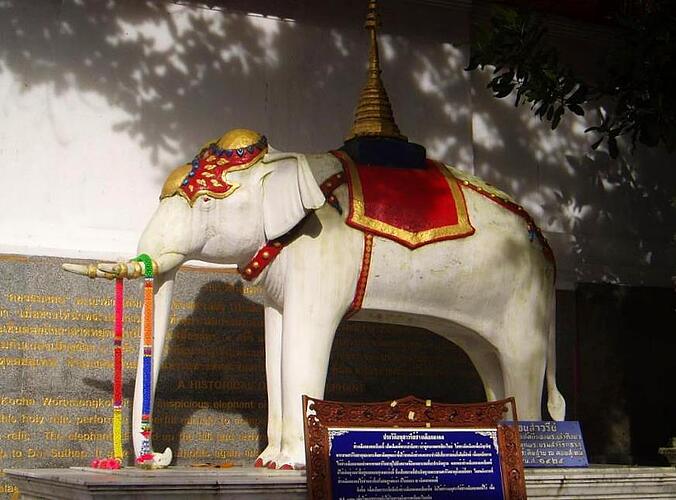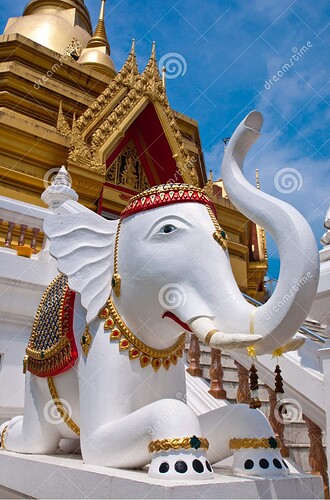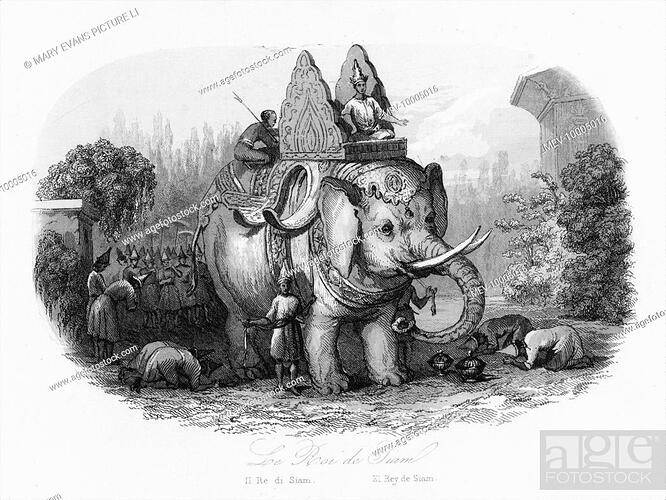Dear god, I finally finished the Thai, at first I thought this was going to be ezpz. As being half-Thai myself, I thought it would be an easy process to with knowledge I already knew being able to source from Thailand itself. but Thai history is surprisingly elusive in further detail. It’ll tell you about all the kings and empires and countless wars fought. But forget trying to dig into the details of technology, society, and in many ways, the way of life in that era.
But here it is!
The Thai
Special thanks to Seicig!
(Yes I know, good competitor to the abbasids.)
Thai Kingdoms Trade, Religion, Infantry
Difficulty: 2/3
Bonuses
- Villagers +5 food carrying capacity from farms.
- Monks cost 175 food instead of gold.
- Villagers can Garrison in houses.
- Building heals Garrisoned units +3HP every 5 seconds.
- Unique Unit: Royal Elephant
- Unique Unit: River Tradeboat replacing Tradeship.
- Unique Unit: Jaturungkabart
- Unique Building: Wat replacing Monestary / University.
- Does not pay Taxes when paying Tribute.
Floating Markets: Markets and Docks generates +1 gold per building within their influence sphere. Rate of this income increases depending on the Tradegoods accumulated.
Trade goods: Minimum of 1 Tradegood is generated each time a trader makes a trade, the number of trade goods generated increases depending on the trade route distance.
Unique LandmarksFeudal Age
- Wat Phutthaisawan: Unlocks the ability to make Early Man-at-Arms with a 10% discount. Functions as Barracks**.**
- The Bench of Public Appeals: Villagers when called to garrison move 10% faster. Can research all-economy upgrades for a 50% increase in speed at the landmark.
Castle Age
- Wat Phanan Choeng: Functions as Wat, Ships ships gain 10% more HP and Produce monks 25% cheaper.
- Phom Phet Fortress: Function as a Keep, can garrison additional 10 units.
Imperial Age.
- Wat Phra Phutthabat: Functions as Wat, Increases movement speed for all units by 10%
- Kraal Pavilion: Provides 1 Royal elephant and 4 Jaturungkabart for 200F and 100G with 120 seconds production time.
Wonder: Wat Photaram
Additional Notes
Building:
- Wat (150S 150W): Functions as a Monastery, but can research all upgrades in Castle age, including University Upgrades in Imperial Age. Exception for Blacksmith Upgrades. Wat can garrison up to 1 Monk.
Units
- River Tradeboat (II, 75W 75G): A Unique unit that replaces the trade ship. Trades at the same rate and as Land Traders, but moved twice as fast as a trade ship. Individual Tradeboat can be set to collect stone, or food, instead of wood as a secondary resource.
- Jaturungkabart (II, 80F 100G): Specialized melee infantry with double-attacks, they get additional buffs staying within the Royal Elephant inspiring range. Gaining cleave damage on their attacks and heals for +1hp every 4 seconds under the Royal Elephant range.
- Royal Elephant (III, 600F 600G): A Elephant that can pick up and carry relics, its presence inspires nearby units with increased movement speed and attack speed within a 4 tile range.
Technologies
- Sakdi Na (II, 100F 100G): Non-siege units return 5% of their value upon death.
- Sangkhalok wares (II, 100S 100G): Traders provide +10 Gold if the trade route is longer than 23 tiles.
- Wang Na (II, 200W 125G): Non-landmark Town centers can garrison +10 units.
- Nuat Phaen Boran (III, 200F, 350G): Doubles the healing rate of Garrisoned units.
- Sancrat (III, 200F 300G): Increases the movement speed of Monks and Elephants carrying relics by 15%
- Floating Rice (III, 200W 500G): Improves Villagers gathering rate from Farms by 15% Muay (III, 500F 300G): Melee Infantry move and attack 10% faster when in combat.
- Phawp Gohk Rawng Luk (III, 500G): Monks can Garrison in Wats, increasing research speed by 10% (to a maximum of 30%)
- Brick Masonry (IV, 300S, 700G): Increases the Health of all Buildings by 40%
- Krabi-Krabong (IV, 300F 1000G): Man at Arms attack speed increased by 20%
- Chatra (IV, 1000G): Gives Royal Elephants +100 HP
Additional Notes: Architecture would be something similar to the Khmer Feudal age buildings mixed with some stone buildings retaining their style. from AoE2. However, their houses are elevated wooden houses with their own distinct flair. Naval units would be the Junk-style ships, the exception being the river trade boat being more akin to a Barge. Language progression: The Tai language had a lot of development, branching out to several linguistical languages during the time of migration. But for the game, it could start off as the Chiang Saen Thai, which is the predecessor to the Sukothai language that they get during feudal, and develop more into the Ayutthaya language in Castle, before becoming an early version of the Modern Thai language in Imperial.
Landmark references:
Wat Phutthaisawan:
This temple was built by King Uthong who was the first monarch and founder of the Ayutthaya Kingdom. It became well known as a Krabi-Krabong (Thai Sword fighting) school from the early Ayutthaya period until the present day. Known as the Phuttaisawan Sword School.
The Bench of Public Appeals:
The Sukothai King known as Ram Khamahaeng the Great, also known as Pho Khun, shared a close relationship with his people. He created this, within his kingdom, upon the entrance hangs a bell, any person from the country wishing to make a formal complaint, finds himself in physical or mental distress, can request the King himself to pass immediate judgment on the matter by ringing the bell.
Wat Phanan Choeng:
The temple houses an immense gilded 19-meter-high seated Buddha called the Luang Pho Tho. Regarded as a guardian for Mariners. It was visited by Zheng He, a Chinese Muslim eunuch admiral from Yunnan who lead the second Ming imperial voyage and bestowed gifts upon the temple in a great ceremony that included the Siamese royalty. Today remembered by the Thai-Chinese visitors who still visit the temple in his honor.
Phom Phet Fortress:
It is one of only two surviving fortresses of Ayutthaya 29 forts. The fort was considered the strongest and most important fort, hence the name Pom Phet (Diamond Fort). The area around the fort included a significant trading center where people of all nationalities resided. One person who used to live in this quarter was Thongi, a Nobleman who was the father of King Rama I. The founder of the Rattanakosin Kingdom and the first monarch of the current Chakri Dynasty, the present-day Monarchy in Thailand.
Wat Phra Phutthabat:
the name literally means: Temple of Buddha’s Footprint. Because it contains a natural depression believed to be the Footprint of Buddha. The king of Ayutthaya build this temple and named it after the hunter Pram bun who found a large depression in the stone resembling a huge footprint. It is believed from the Bunnoowaat Sutra, tells of the flight of the Buddha to the peak of mount Suwanbanphot and how he left his footprints. It is believed 5 footprints of the Buddha is in different places. One of them is Phra Phutthabat temple.
Kraal Pavilion:
utilized as the royal seat to witness the elephant round-up. In the past, wild elephants would be trained here to become war or transport animals. In the center of the stockade there resides a Shrine said to house the elephant guardian.
Wonder: Wat Photaram: Also known as Wat Pho, is one of Bangkok’s oldest temples. It existed before Bangkok was established as the new Capital in the region. It is the temple famous for housing the reclining Buddha statue, Phra Buddhasaiyas. It was also considered the first public university in Thailand, teaching students in the fields of religion, science and literature. A school of traditional medicine and massage was established. The Thai massage taught at Wat Pho has been included in the UNESCO list of cultural heritage.
Building:
Wat
- Health: 2100
Units:
Jaturungkabart:
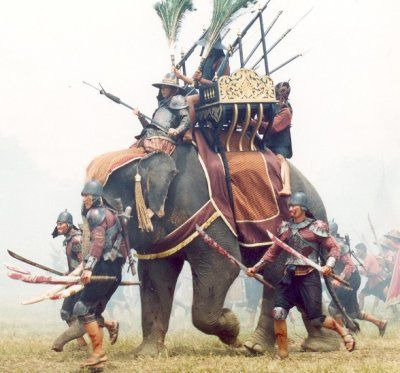
(The infantry guys around the elephant)
- Health: 90/110/140
- Attack: 6/7/8 Melee; 14/16/20 tortch; +1 Bonus Damage against infantry.
- Rate of fire: 1.25s
- Armor: 1/2/3
- Speed: 1.125 tiles/s
Jaturungkabart were the bodyguards of the Thai Elephants and would guard their legs against any attacks that might threaten the elephant. They are specially trained, form of elite soldiers. The name itself is somewhat equivalent to Protector. These units are light armor so they would be rather vulnerable against archers and units with a charge bonus. Being most effective at clearing spear mass that might threaten the royal elephant.
Royal Elephant stats:
- Health: 1100/1200
- Attack: 30 melee (Tusks); 20 Melee (Ngao);
- Rate of fire: 2.75s melee (Tusks); 1.5s Melee (Ngao);
- Range: 1tiles (tusks), 1 tiles (Ngao)
- Armor: 3/4 Pierce armor: 1/1 Speed: 1 tiles/s
Elephants are hugely important even today in Thai society, during these times, Battles would often start with an Elephant-duel between the 2 opposing armies.The elephants used in warfare were mainly used in a supportive role, reflected by their inspiring aura. As Thai armies were mainly infantry focused. Mostly used to exploit weaknesses in the opponent army’s defenses by leading a charge
River Trade Boat stats:
- Health: 100 Speed: 3 tiles/s
River trade boats function as faster trade ships. While they give the same trade returns as a regular land trader, but with an equal amount of secondary resources of one choosing on each individual boat. When made, they would start off with the Default: Gold and Wood. But could be switched to Gold and Food, or Gold and Stone.
Write-up:
I would have never guessed I would struggle so much in trying to research the topic of Medival Thailand. Anything pre-16th century was elusive as hell, and I was scouring the internet looking for any information. Ended up having to read an old book called A new historical relation of the kingdom of siam, that which was written in almost a Shakespearian style. Being my self of Thai heritage, I even had to nag my own mother to do some translation. Because trying to Romanize Thai words is a feat in itself.
While there is plenty of stories and history involving the origin, creation, wars, and eventual downfall of Thai kingdoms and empires alike. There is actually very little information on them from within. What sort of technology was common, and how were their weapons and armor made? What were they made of? Things like that were surprisingly hard to find.
Anyway, the Thai (Tai-people) are interesting as they were not originally native to South East Asia, and originated in China, sometime during the Tang Dynasty, they migrated south and settled. Due to their connection to China, their goods were quite sought after by the Chinese, which is why since their early age has always been prospering through trade, establishing trade routes along the way. Eventually coming into the lands of the Khmer and integrated themselves with the Khmer empire for a time being. The word Thai means Free. And I think it might be for a good reason, perhaps the reason why they migrated south away from the Chinese, and when they grew large enough, broke away from the Khmer empires, establishing kingdoms of their own.
Sukothai became a quickly growing kingdom, growing originally from Maritime roots into a central trade hub in the region. Thai culture has always been open to foreigners so the Thai kingdoms quickly grew to become cosmopolitan and started blending cultures. Eventually becoming very rich, until the growth of the Ayutthaya eventually took over, surprisingly, there was very little conflict between the rising Ayutthaya that eventually became the dominant power in the region, and the Sukothai, rather they formed a sort of Symbiosis, becoming known as Twin cities, both prospering from a rich and diverse trade. The kingdom of La Na in the north became the main driving force of religion, introducing Theravada Buddhism that eventually came to dominate the region. This blending with the Hindu-Indian culture of the Khmer eventually created the distinct south-east Asian Culture and Architecture we see today.
However, it was not all peace and prosperity. The Thai suffered constant invasion from the Burmese and have as many countless wars against them as the English and French had during their history. While the Burmese eventually won and manage to take the kingdom of La Na, and sack Ayutthaya destroying it completely. It never really manage to snuff out the Thai people and their identity. Every time the Thai people got raided and pillaged, they would quickly rise again as an economist might.
This is even more evident after the final Burmese destruction of Ayutthaya, the Thai people within a few years recreated the former glory of Ayutthaya further south in Bangkok which was a far more defensible position and closer to the ocean. Again establishing international trade and diplomacy. Modernizing their military and making a series of policies that eventually would lead them to be one of the few countries in Asia that never got colonized, and was well respected by the western powers, even seen as an equal at some points.
If you enjoyed this, you can check out my other Civ Concepts:
Khmer Empire
The Japanese
Korean Kingdoms
Next up: Norse (I need a break from Asia, I’m planning 4 more asian nations. Champa, Burmese, Dai Viet and Malayu)
